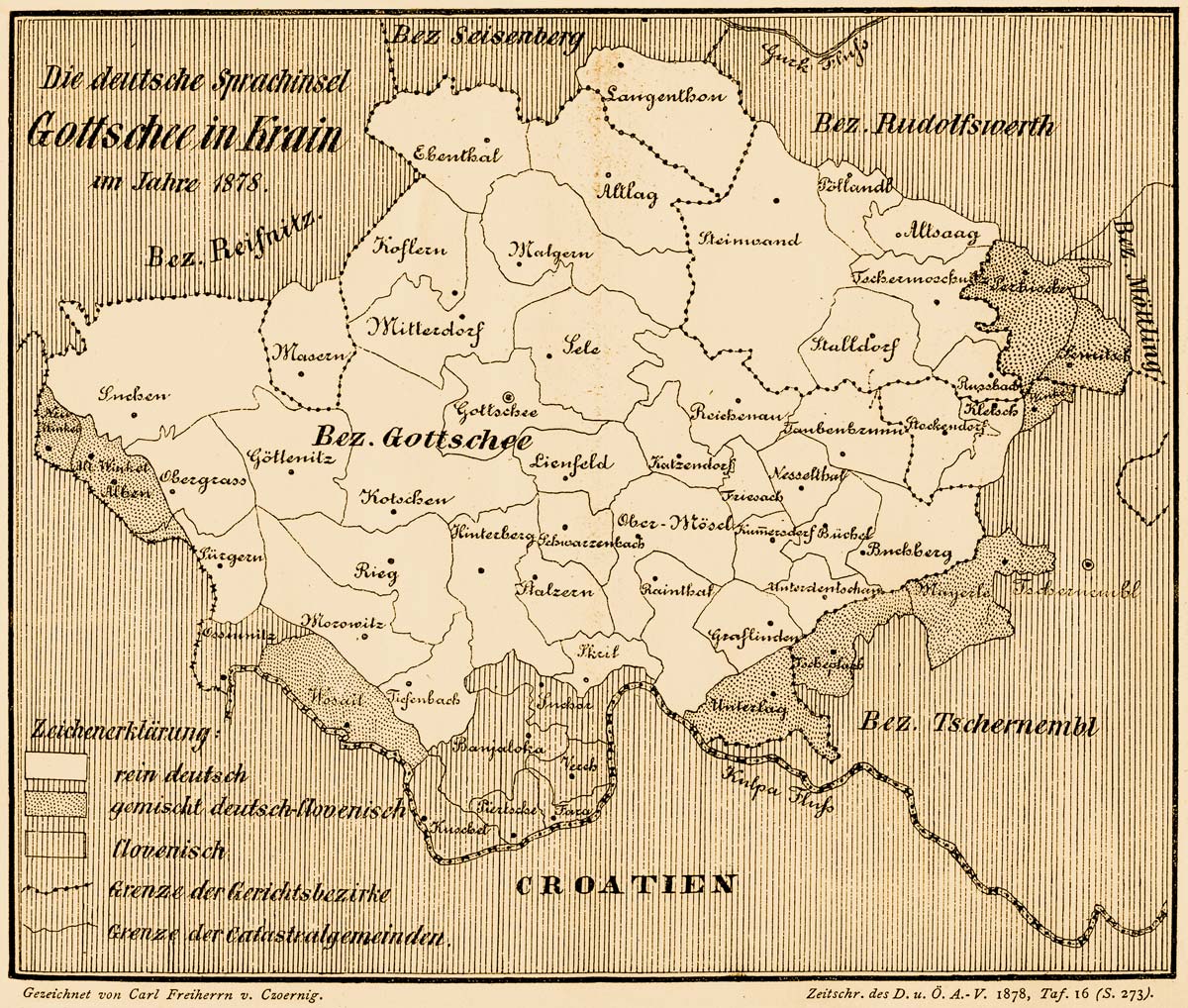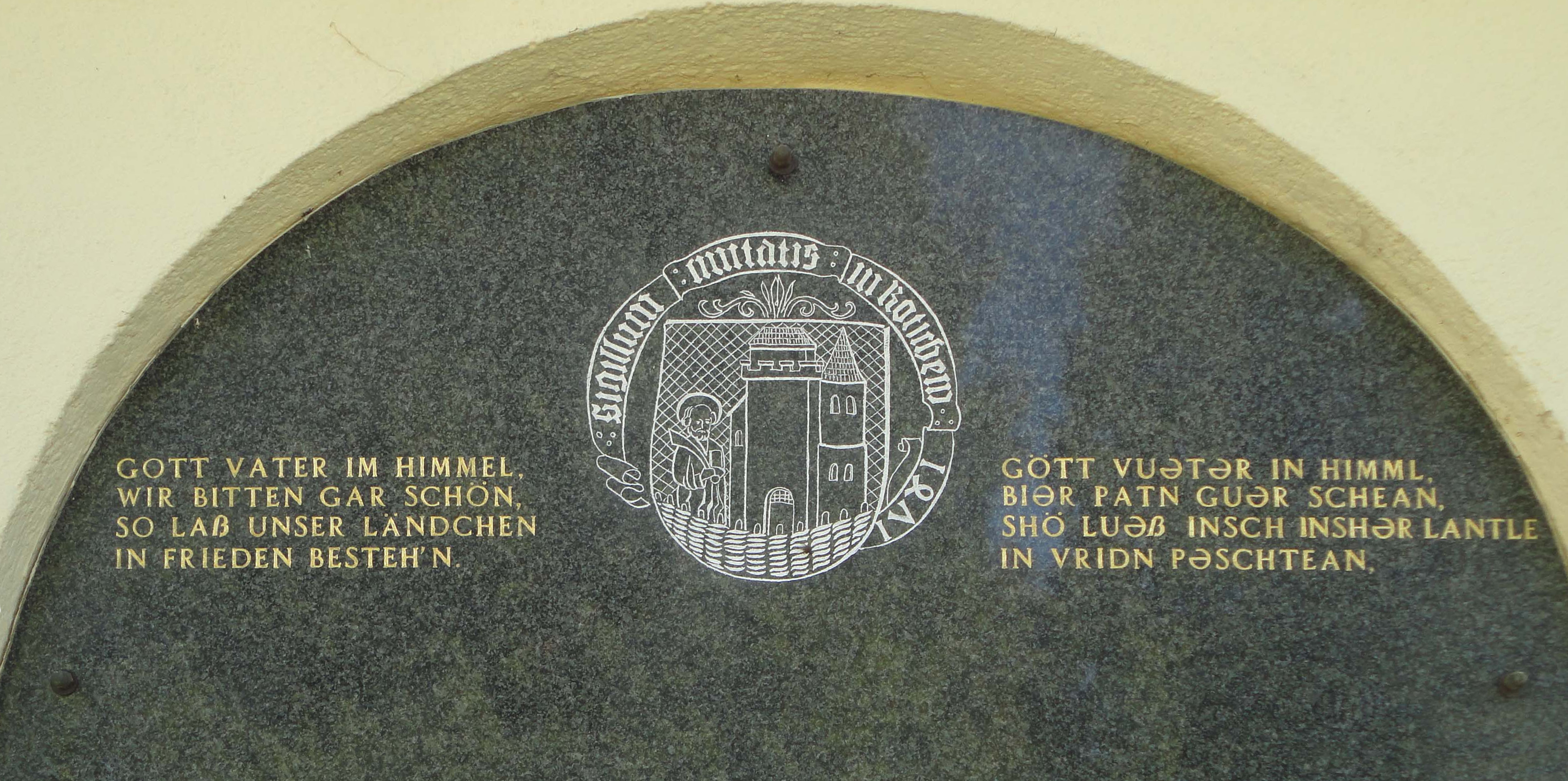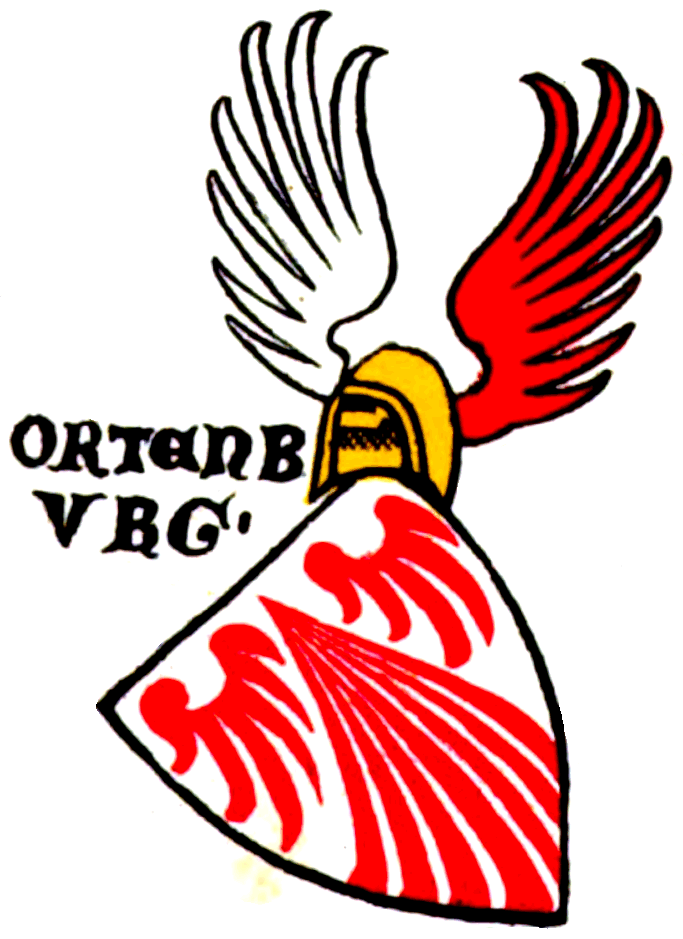|
Gottschee
Gottschee (, ) refers to a former German-speaking region in Carniola, a crownland of the Habsburg monarchy, Habsburg Empire, part of the historical and traditional region of Lower Carniola, now in Slovenia. The region has been a county, duchy, district, and municipality during various parts of its history. The term often also refers to the entire Ethnolinguistics, ethnolinguistic Enclave and exclave, enclave regardless of administrative borders. Today Gottschee largely corresponds to the Municipality of Kočevje. The original German settlers of the region are called Gottschee Germans or Gottscheers, and their German dialect is called Gottschee German or Gottscheerish. Geography The Gottschee enclave encompassed a roughly oval-shaped area between 45° 46′ N and 45° 30′ N, and between 14° 36′ E and 15° 9′ E. Geographers divided the enclave into seven regions based on valleys (from west to east): * The Suchen Plateau () in the extreme west, with the (pre-1933) municipaliti ... [...More Info...] [...Related Items...] OR: [Wikipedia] [Google] [Baidu] |
Gottscheerish
Gottscheerish (''Göttscheabarisch'',Maridi Tscherne: Wörterbuch Gottscheerisch-Slowenisch. Einrichtung für die Erhaltung des Kulturerbes Nesseltal, Koprivnik/Nesseltal 2010. , ) is an Upper German dialect which was the main language of communication among the Gottscheers in the enclave of Gottschee, Slovenia, before 1941. It is occasionally referred to as Granish or Granisch in the United States (< German ''Krainisch'' ' Carniolan'), a term also used for Slovene. Language history Gottscheerish belongs to Southern Bavarian within the Bavarian dialect group. The Bavarian dialec ...[...More Info...] [...Related Items...] OR: [Wikipedia] [Google] [Baidu] |
Gottscheers
Gottscheers (, , ) are the German settlers of the Kočevje, Kočevje region (a.k.a. Gottschee) of Slovenia, formerly Gottschee, Gottschee County. Until the World War II, Second World War, their main language of communication was Gottscheerish, a Bavarian language, Bavarian dialect of German. History Duchy of Carniola In 1247, Berthold (patriarch of Aquileia), Berthold, Patriarch of Aquileia, transferred fiefdom of Ribnica, Ribnica, Ribnica and its Lower Carniola, Lower Carniolan environs to the Counts of Ortenburg, a Carinthian noble family. This area included the primeval forest area that would eventually become known as the Gottschee. In 1336, Patriarch Bertrand of Saint-Geniès reaffirmed and expanded the rights and responsibilities of Otto V of Ortenburg and his successors as rulers of the area. Starting in 1330 and continuing until ''circa'' 1400, the Counts of Ortenburg settled German peasants from East Tyrol and Carinthia within their fiefdom. In 1377, the town of Ko� ... [...More Info...] [...Related Items...] OR: [Wikipedia] [Google] [Baidu] |
Kočevje
Kočevje (; ; ''Göttscheab'' or ''Gətscheab'' in the local Gottscheerish dialect; ) is a town and the seat of Municipality of Kočevje in southern Slovenia. Geography The town is located at the foot of the Kočevski Rog karst plateau on the Rinža River in the historic Lower Carniola region. It is now part of the Southeast Slovenia Statistical Region. The Rinža River flows through the town. Lake Kočejve, a former open-pit coal mine, lies northeast of the town center. Climate Kočevje features a humid continental climate (''Dfb''/''Cfb''). Name Kočevje was attested in written sources in 1363 as ''Gotsche'' (and as ''Gotsew'' in 1386, ''Kotsche'' in 1425, and ''propre Koczeuiam'' in 1478). The name is derived from ''*Hvojčevje'' (from ''hvoja'' 'fir, spruce'), referring to the local vegetation. The initial ''hv-'' changed to ''k-'' under the influence of German phonology. Older discredited explanations include derivation from the hypothetical common noun ''*kočev ... [...More Info...] [...Related Items...] OR: [Wikipedia] [Google] [Baidu] |
Municipality Of Kočevje
The Municipality of Kočevje (; ) is a Municipalities of Slovenia, municipality in southern Slovenia. The seat of the municipality is the city of Kočevje. Today it is part of the Southeast Slovenia Statistical Region. In terms of area, it is the largest municipality in Slovenia. It borders Croatia. History In 1247 Berthold (patriarch of Aquileia), Berthold, Patriarch of Patriarchate of Aquileia (state), Aquileia granted the area around Ribnica, Slovenia, Ribnica within the imperial March of Carniola to the Duchy of Carinthia, Carinthian counts of Grafschaft Ortenburg, Ortenburg. When the counts received further estates on the wooded plateau down to Kostel, Slovenia, Kostel on the Kupa, Kolpa River in 1336 from Patriarch Bertram of St. Genesius, Bertram, they called for German-speaking settlers from Carinthia and County of Tyrol, Tyrol. These Germanic people became known as the Gottscheers, and their dialect, Gottscheerish. The Gottscheers lived in isolation in the Gottschee a ... [...More Info...] [...Related Items...] OR: [Wikipedia] [Google] [Baidu] |
Kočevske Poljane
Kočevske Poljane (; ''Leksikon občin kraljestev in dežel zastopanih v državnem zboru,'' vol. 6: ''Kranjsko''. 1906. Vienna: C. Kr. Dvorna in Državna Tiskarna, p. 156–157.Ferenc, Mitja, & Gojko Zupan. 2012. ''Izgubljene kočevske vasi, vol. 2 (K–P)''. Ljubljana: Znanstvena založba Filozofske fakultete Univerze v Ljubljani, p. 224.) is a village in the Municipality of Dolenjske Toplice in Slovenia. The area is part of the historical region of Lower Carniola. The municipality is now included in the Southeast Slovenia Statistical Region. The village includes the hamlets of Gorica ( or ''Büchel bei Pöllandl'') and Trnovec (or Trnje; ). Name The name of the settlement was changed from ''Poljane'' to ''Kočevske Poljane'' in 1953. In the past the German name was ''Pöllandl''. History Pöllandl was a village settled by Gottschee Germans inside the Gottschee region until 1941. During the Second World War its original population was resettled by the German authorities. Howev ... [...More Info...] [...Related Items...] OR: [Wikipedia] [Google] [Baidu] |
Gotenica
Gotenica (; in older sources also ''Gotnica'', ,''Leksikon občin kraljestev in dežel zastopanih v državnem zboru,'' vol. 6: ''Kranjsko''. 1906. Vienna: C. Kr. Dvorna in Državna Tiskarna, p. 36.Ferenc, Mitja. 2007. ''Nekdanji nemški jezikovni otok na kočevskem''. Kočevje: Pokrajinski muzej. Gottscheerish: ''Gənize'' or ''In dr Gənizn''Petschauer, Erich. 1980. "Die Gottscheer Siedlungen – Ortsnamenverzeichnis." In ''Das Jahrhundertbuch der Gottscheer'' (pp. 181–197). Klagenfurt: Leustik.) is a settlement in the Municipality of Kočevje in southern Slovenia. The area is part of the traditional region of Lower Carniola and is now included in the Southeast Slovenia Statistical Region. Geography Gotenica is located in a clearing surrounded by wooded plateaus and hills: the Gotenica Mountains (''Goteniška gora'') to the west, with nearby Gotenica Mount Snežnik (''Goteniški Snežnik'', ) as its highest peak, the Big Mountains (''Velika gora'') chain to the north rising to , ... [...More Info...] [...Related Items...] OR: [Wikipedia] [Google] [Baidu] |
County Of Ortenburg
The Counts of Ortenburg () were a comital family in the mediaeval Duchy of Carinthia. Though they had roots in Bavarian nobility, an affiliation with the Imperial Counts of Ortenburg, a branch line of the Rhenish Franconian House of Sponheim, is not established.Hausmann, Friedrich (1994). "Die Grafen zu Ortenburg und ihre Vorfahren im Mannesstamm, die Spanheimer in Kärnten, Sachsen und Bayern, sowie deren Nebenlinien" in ''Ostbairische Grenzmarken - Passauer Jahrbuch für Geschichte Kunst und Volkskunde''. Nr. 36, Passau 1994. History Little is known about the reasons the Ortenburgs settled in the Carinthian Lurngau. No charters are available on the creation of the Ortenburg Castle on the northern slope of Mt. Goldeck above the village of Baldramsdorf, nor about the manner in which the Ortenburgs obtained their property. In 1072, one Adalbert of Ortenburg, probably a younger son of Count Hartwig II of Grögling-Hirschberg (d. 1068/69), served as a ''Vogt'' stattholder i ... [...More Info...] [...Related Items...] OR: [Wikipedia] [Google] [Baidu] |
Slovenia
Slovenia, officially the Republic of Slovenia, is a country in Central Europe. It borders Italy to the west, Austria to the north, Hungary to the northeast, Croatia to the south and southeast, and a short (46.6 km) coastline within the Adriatic Sea to the southwest, which is part of the Mediterranean Sea. Slovenia is mostly mountainous and forested, covers , and has a population of approximately 2.1 million people. Slovene language, Slovene is the official language. Slovenia has a predominantly temperate continental climate, with the exception of the Slovene Littoral and the Julian Alps. Ljubljana, the capital and List of cities and towns in Slovenia, largest city of Slovenia, is geographically situated near the centre of the country. Other larger urban centers are Maribor, Ptuj, Kranj, Celje, and Koper. Slovenia's territory has been part of many different states: the Byzantine Empire, the Carolingian Empire, the Holy Roman Empire, the Kingdom of Hungary, the Republic of Venice ... [...More Info...] [...Related Items...] OR: [Wikipedia] [Google] [Baidu] |
Lower Carniola
Lower Carniola ( ; ) is a traditional region in Slovenia Slovenia, officially the Republic of Slovenia, is a country in Central Europe. It borders Italy to the west, Austria to the north, Hungary to the northeast, Croatia to the south and southeast, and a short (46.6 km) coastline within the Adriati ..., the southeastern part of the historical Carniola region. Its largest town and urban center is Novo Mesto, with other urban centers including Kočevje, Grosuplje, Krško, Trebnje, and Ribnica. Geography Lower Carniola is delineated by the Ljubljana Basin with the city of Ljubljana to the northwest, by the Kolpa River and the border with Croatia with the Gorjanci Mountains to the south and southeast, by the Sava River to the north and northeast, and by Mount Krim, the Bloke Plateau, and the Potok Plateau () to the west. The southernmost region down to the border with Croatia on the Kolpa River is called White Carniola and usually considered part of Lower C ... [...More Info...] [...Related Items...] OR: [Wikipedia] [Google] [Baidu] |
Mahovnik
Mahovnik (; in older sources also ''Mošvald'';''Intelligenzblatt zur Laibacher Zeitung'', no. 141. 24 November 1849, p. 26 ,''Leksikon občin kraljestev in dežel zastopanih v državnem zboru,'' vol. 6: ''Kranjsko''. 1906. Vienna: C. Kr. Dvorna in Državna Tiskarna, p. 36. in older sources also ''Moschwald'') is a settlement on the left bank of the Rinža River, immediately northwest of the town of Kočevje in southern Slovenia. The area is part of the traditional region of Lower Carniola and is now included in the Southeast Slovenia Statistical Region. History Mahovnik was the first settlement in Gottschee attested in written sources. It was named in a letter from Patriarch Bertram to Count Oton von Ortenburg on 1 September 1339.Tschinkel, Wilhelm. ''Gottscheer Volkstum in Sitte, Brauch, Märchen, Sagen, Legenden und anderen volkstümlichen Überlieferungen.'' Ljubljana: ZRC, p. 607. At the time, it also included the territory of present-day Kočevje Kočevje (; ; ''Götts ... [...More Info...] [...Related Items...] OR: [Wikipedia] [Google] [Baidu] |
Seč, Kočevje
Seč (; ''Leksikon občin kraljestev in dežel zastopanih v državnem zboru,'' vol. 6: ''Kranjsko''. 1906. Vienna: C. Kr. Dvorna in Državna Tiskarna, p. 40.Ferenc, Mitja. 2007. ''Nekdanji nemški jezikovni otok na kočevskem''. Kočevje: Pokrajinski muzej, p. 4.) is an abandoned settlement in the Municipality of Kočevje in southern Slovenia. It was a village inhabited by Gottschee Germans. In 1941, during the Second World War its original population was expelled. The area is part of the traditional region of Lower Carniola and is now included in the Southeast Slovenia Statistical Region. Church The local church Church may refer to: Religion * Church (building), a place/building for Christian religious activities and praying * Church (congregation), a local congregation of a Christian denomination * Church service, a formalized period of Christian comm ... is dedicated to Saint Agnes () and was built in 1837. Its interior furnishings were destroyed after the Second World W ... [...More Info...] [...Related Items...] OR: [Wikipedia] [Google] [Baidu] |
Gornja Topla Reber
Gornja Topla Reber (; Ferenc, Mitja. 2007. ''Nekdanji nemški jezikovni otok na kočevskem''. Kočevje: Pokrajinski muzej, p. 4.) is a remote abandoned settlement in the Municipality of Kočevje in southern Slovenia. The area is part of the traditional region of Lower Carniola and is now included in the Southeast Slovenia Statistical Region. Its territory is now part of the village of Topla Reber. Name The name ''Gornja Topla Reber'' 'upper Topla Reber' contrasts with neighboring '' Dolnja Topla Reber'' 'lower Topla Reber', which stands below the former. The shared part of the names means 'warm slope', referring to the geographical position of the settlements on a sun-exposed southwest-facing slope. The semantically corresponding German names ''Oberwarmberg'' and ''Unterwarmberg'' share the same contrastive relation. History Gornja Topla Reber was a village inhabited by Gottschee Germans. In the winter of 1941–1942 one of the first Partisan Partisan(s) or The Partisan(s) may ... [...More Info...] [...Related Items...] OR: [Wikipedia] [Google] [Baidu] |



